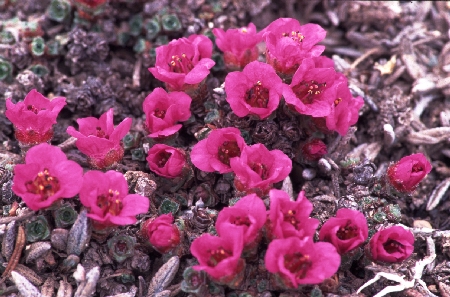
Vegetation
Tuktut Nogait National Park

© Parks Canada / Christian Bucher
Most of the park is continuous arctic tundra and is entirely above the treeline. Extensive sparsely vegetated or barren areas exist as well, especially in areas where bedrock is exposed, and in the central Melville Hills.
The most common vegetation communities are:
- dry upland tundra, dominated by sedge ( Carex spp ) and mountain avens ( Dryas integrifolia );
- wet sedge meadows, in low-lying areas and depressions or slopes near perennial snow banks;
- small stands of willow ( Salix spp ) and balsam poplar ( Populus balsimifera ), found in the more sheltered valleys and on warm southern facing slopes, especially closer to the coast; and
- shrub communities of dwarf birch ( Betula glandulosa ) and heath species.
From late June until the end of July the tundra is carpeted with showy wildflowers, such as arctic lupine, moss campion, purple saxifrage, mountain avens, siberian phlox, lapland roseberry, oxytropis, cinquefoil, hedysarum, and river beauty.
Related links
- Date modified :